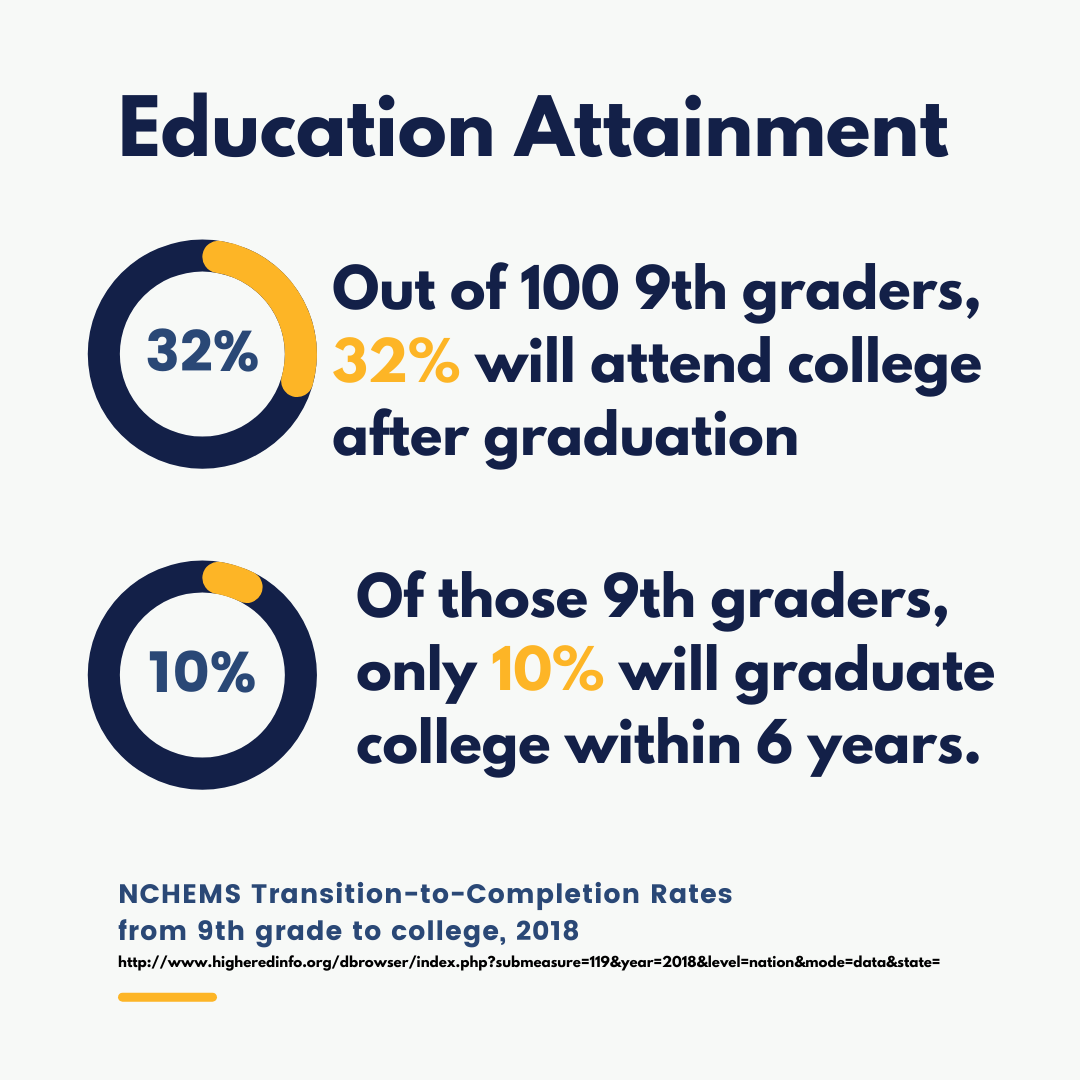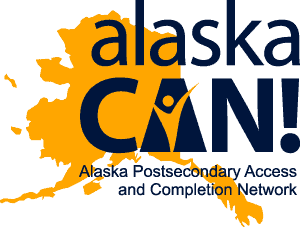Why Postsecondary?
For every 100* ninth graders who begin high school, 78 will finish in Alaska. 32 will enter college and 21 of those will still be enrolled their sophomore years. Only 10 of these students will graduate college within six years.
This is the pipeline of Alaska students we are counting on to transition into the Alaska workforce. What’s more – Alaskans have consistently ranked at the low end of the scale with regard to postsecondary education. Many Alaskans are foregoing the rewards of higher rates of postsecondary attainment, which are both public, and private.

Public Benefits
- Greater workforce productivity & flexibility
- Less need for government financial support services
- Increased tax revenues & Economic benefit to others
Additional social benefits include reduced crime rates, higher participation rates in community & volunteer activities, and voter turnout.
Private Benefits
- Higher Salaries and Benefits
- Employment
- Higher Savings Levels
- Improved Working Conditions
Additional social benefits to individuals include a longer life expectancy and better health, along with an improved quality of life and better consumer decision-making.
Research has found that there are a number of reasons why, despite the benefits, students do not pursue or follow through with postsecondary education. College and training aspirations and attainment are dependent on income, health, socioeconomic status, parental educational history and geographic location. Any combination of these factors can influence the perception and value of college and career training.
